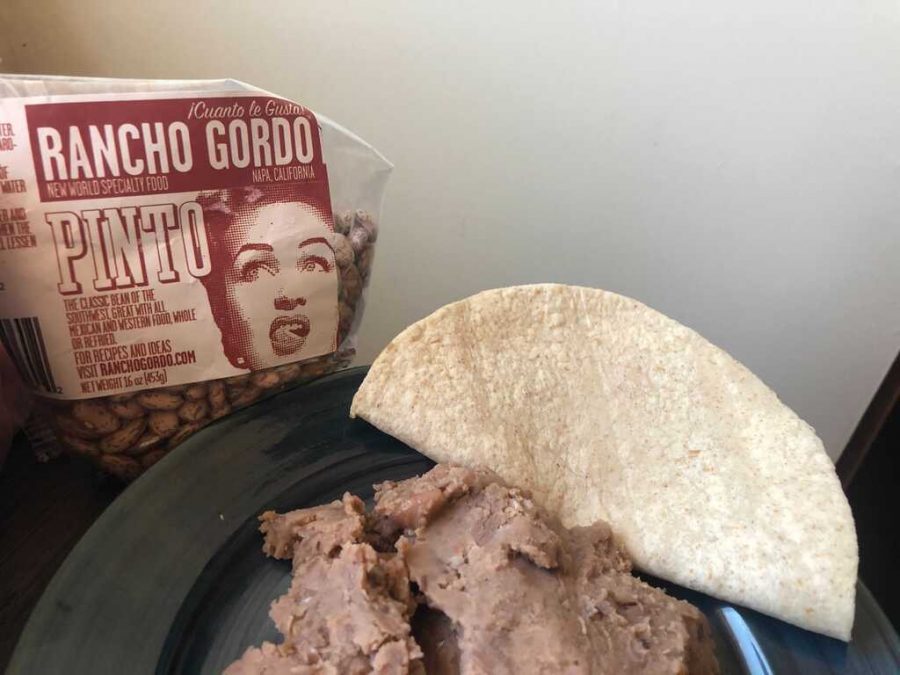Spilling the Beans | The Art of the Refried Bean
Spilling the Beans is an occasional blog written by contributing editor Leah Mensch about all things bean-related.
March 14, 2021
To begin, a poem by Sylvia Plath. But actually, a poem by Leah Mensch:
Refried beans
Are an art, like everything else.
I make them exceptionally well.
It’s probably true that all writers are liars, but in this case, I am not lying. I make really good refried beans. Refried beans really are an art, but they are an art of patience and attentiveness far more than an art of intricacy. This is probably good news for most of us. Make sure you leave time to soak the beans overnight, and otherwise, expect to be checking the beans on the stove intermittently for 20-30 minutes, depending on how much you make.
I beg you to make your beans from scratch in nearly every bean blog, but with refried beans, you don’t have a choice. This is because the “bean broth,” or the leftover bean water in the pot, is an ingredient in refried beans. Traditionally, refried beans use lard, but that’s too complicated, and I’m mostly — but not always — a vegetarian.
[You can access my foolproof bean-from-scratch recipe here. In the recipe, I use black beans, but this method works for every bean.]
Recipe Yields: This is a big question mark. Half a soup container’s worth? I don’t even know what “serving size” means.
Ingredients:
The patience of a saint
One cup of DRY pinto beans (soak in water overnight)
Olive oil
Salt
Pepper
One clove garlic
One dried hot pepper
One bay leaf
Directions:
Step 1: Soak beans overnight. I think I sound like a broken record, but I have to include this in the steps, ethically.
Step 2: Cook beans using this recipe. This is where you use the dried hot pepper, garlic, salt, pepper and bay leaf. It is vital you do NOT drain the beans when they’re done cooking.
Step 3: After removing the bay leaf and hot petter, move your beans and bean broth into a container. Find a large pan. Sometimes I use a stock pot because I don’t have to worry about cleaning up as much of a mess, but a regular frying pan — so long as it’s large — does the job.
Step 4: Add a generous amount of olive oil to the pan, and turn on heat.
Step 5: Spoon all of the beans (without much of the broth) into the pan and mash them. You can use the back of a large spoon if that’s all you have. For some reason, I have a potato masher, and that seems to work really well. Mash until the beans turn into a thick paste. Your arm might get tired. Keep going.
Step 6: This is where the patience comes in. Once the beans resemble a thick paste, slowly add the broth, about ¾ cups at a time. Stir the beans in the broth until the beans absorb the broth and become thick and pasty again. Then, add another ¾ cups of broth. Do this until you’ve used all the broth.
Step 7: Serve and prepare to be floored. You might need to add more salt and pepper when they’re finished.
Serving suggestions:
I like to eat these in a taco, similar to my bean burritos. I just use a smaller tortilla, and usually eat two. I also don’t use rice, and I find that the ingredients distribute much more evenly, because the beans are in a pasty form. It’s nice to take a bite and not get a mouthful of entirely cilantro and nothing else.
You can also eat them with rice. Sometimes, I just eat them plain.
Notes:
– I certainly condone eating all of your refried beans in one sitting, but if you refrigerate them, they reheat best in a frying pan with a little bit of water. Some people also like to chop an onion up and saute it with the beans. That’s never a bad idea.
– In this recipe, I used pinto beans, because they’re the most traditional refried beans. But I’ve actually found that mayocoba beans taste just as good — maybe better. This is still to be determined.
– In my last two blogs, I asked for suggestions about an affordable brand of tortillas that were also edible. Nobody wrote to me, which made me kind of sad, but I found Maria and Ricardo’s Tortillas, which are objectively the best tortillas I’ve ever purchased from a conventional grocery store. They’re sold at most Market District Giant Eagle stores, and Whole Foods. Just in case anyone was sitting on the edge of their seat.
Leah Mensch is the opinions editor and staff bean czar. Write to them at [email protected].









